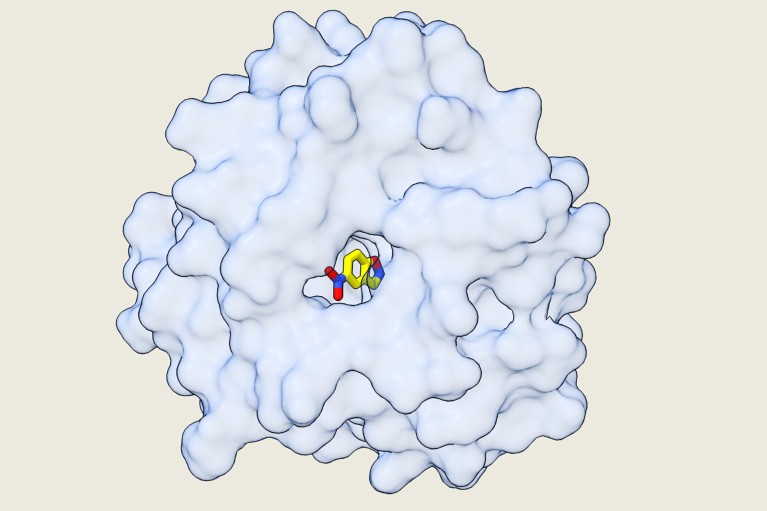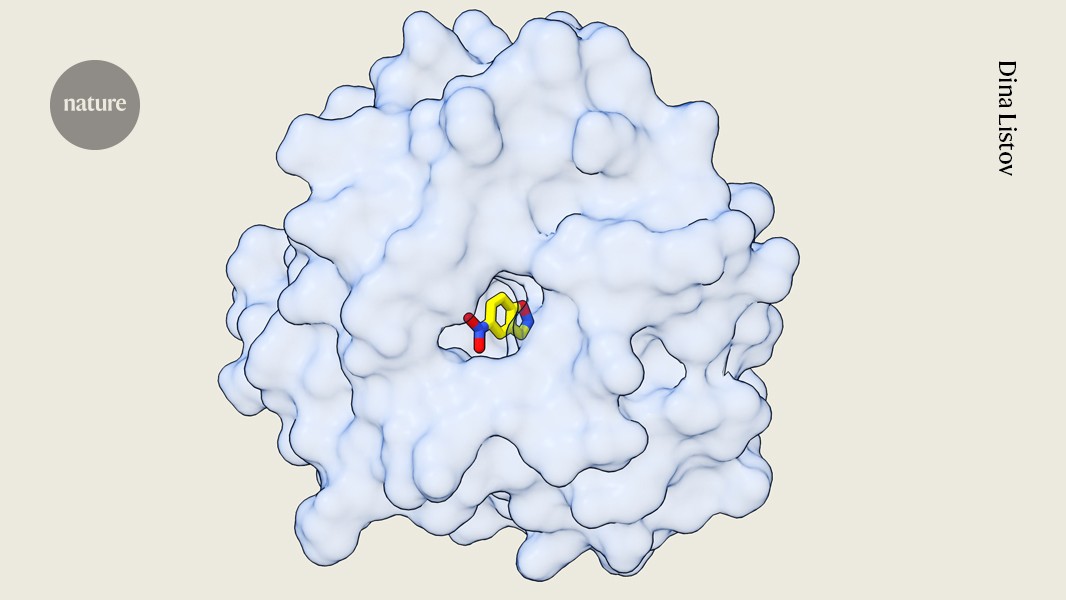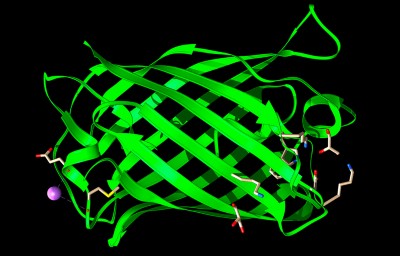
An enzyme (white) devised by a computational approach cradles the substrate (red, yellow and blue) in its active-site pocket.Credit: Dina Listov
Computer algorithms have designed highly efficient synthetic enzymes from scratch, with minimal need for tedious hands-on experiments to perfect them. The resulting enzymes catalyze a chemical reaction that no known natural protein can execute, achieving a reaction rate and efficiency similar to naturally occurring enzymes.
The proteins, described on 18 June in Nature1, open the door to an era in which bespoke enzymes can be rapidly designed to facilitate a variety of reactions.
“They’re remarkable,” says Sílvia Osuna, a computational chemist at the University of Girona in Spain, who was not involved in the study. “It’s very hard to computationally design a highly efficient enzyme.”
Streamlined enzymes
The ability to build synthetic enzymes could lead to new ways of making medicines and industrial chemicals. But attempts to use computer algorithms to design such enzymes have produced inefficient catalysts that researchers must later improve in the laboratory — an approach that “is very labourious”, says Sarel Fleishman, who studies computational protein design at the Weizmann Institute of Science in Rehovot, Israel.
I told AI to make me a protein. Here’s what it came up with
Fleishman and his colleagues sought a better approach. As a test case, they decided to construct a catalyst for a non-natural chemical reaction called the Kemp elimination, which involves the removal of a proton from a carbon atom in certain substrates.
The team assembled data on a group of natural enzymes to serve as a starting point, and computationally broke these protein sequences into fragments. The fragments were then shuffled and recombined into an array of all possible combinations.
The researchers fed these combinations into their computer algorithms. These used models of how the atoms in proteins behave to predict which of these combinations would serve as the ideal chemical ‘backbone’ for the new enzyme.
Algorithm with intuition
The team also tweaked the enzyme’s active site, where chemical catalysis takes place. For years, scientists have assumed that it was critical to have a ring-shaped amino acid in a key position near that site. But Fleishman and his colleagues asked their algorithm to predict what would happen if other amino acids were placed there.
The program favoured a non-ringed amino acid in that spot. With that change, the enzyme’s efficiency shot through the roof, says Fleishman: “I was shocked.”
In the end, the most efficient enzyme the team designed differed from its closest naturally occurring cousins by more than 140 amino acids. It was also 100 times more efficient than similar enzymes previously designed using artificial intelligence (AI).



